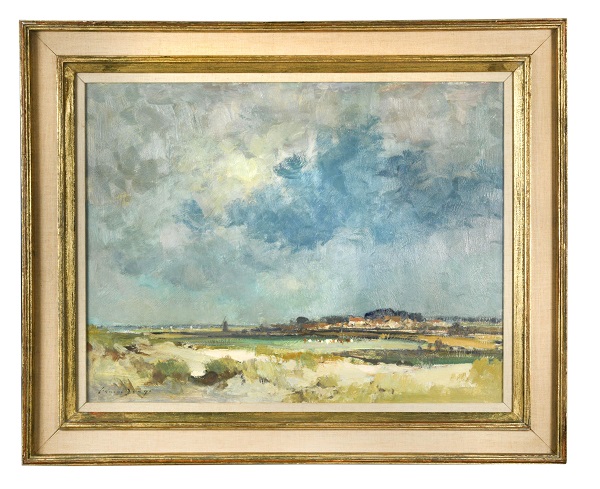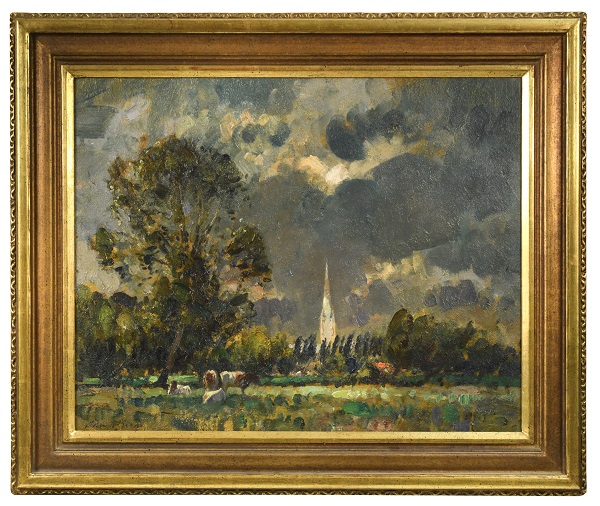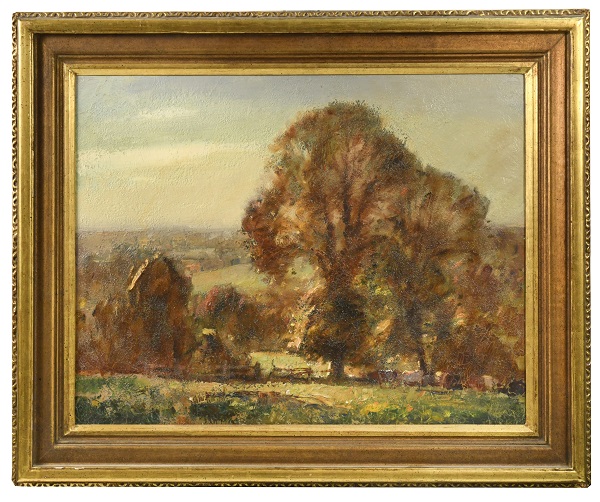Edward Seago was born in Norwich in 1910. Confined to his bedroom for much of his childhood due to a heart issue, he was mainly a self-taught artist, having had little formal education. Best known for his landscapes and portraits, Seago served during the Second World War and painted scenes of much of the Italian campaign. This period brought him worldwide acclaim, and in 1953 he was appointed an official Coronation artist and accompanied the Duke of Edinburgh on a world tour, leading to an exhibition at St James’s Palace in 1957.

Edward Seago, Cley-next-the-Sea, sold at Cheffins for £38,000
Today, Seago is one of the most sought-after British artists in the auction market, and even during his lifetime, his popularity with the public was such that those who wished to buy one of his paintings had to queue at his various exhibitions around the world. His painting style which has been described as either Impressionist or Post-Impressionist appeals to a large audience and his subject matter being primarily landscapes and seascapes appears to fit nicely into most interiors, both modern but also traditional. In my view, his works appeal to and satisfy a wide range of interior design trends – although he is regarded as a modern British artist, his landscapes remain deeply traditional from an aesthetic point of view. The influence of Constable is obvious here, and while Seago’s painterly approach and expressive brushwork are inspired by the Impressionist and Post-Impressionist painting techniques and methods, the often East Anglian-based subject matter harks back to Constable’s approach to landscape. Seago was known to be a great admirer of Constable’s oil sketches, from which he would have drawn much inspiration. Indeed, East Anglian subjects are some of the most prevalent in Seago’s works and are some of the most regular to crop up at auction.

Edward Seago, ‘The Sunlit Spire’, available at The Fine Sale
Depicting a sense of atmosphere & tranquillity of country life in East Anglia – Seago collectors enjoy looking at pictures of familiar places, with views of Norfolk beaches and coastal scenes being particularly commercially appealing and sought after. We have seen that views of known places regularly achieve the highest prices, and a perfect example would be a view from near Cley next the Sea, which Cheffins sold for £38,000 in 2021 to a local collector. In this instance, the painting had been in a local private collection for many years, the vendor having originally been raised near where the picture had been painted. It had been purchased from P & D Colnaghi in London who had represented the artist during his lifetime. For that reason, this provenance usually adds value to Seago’s pictures.

Edward Seago, 'A Berkshire Vale', available at The Fine Sale
Seago has had a wide range of admirers, including the Royal family, the Aga Khan and countless private local collectors who grew up in the familiar surroundings captured in his works. Seago enjoyed a long relationship with HRH the Duke of Edinburgh who described him as a ‘conjuror pulling rabbits out of a hat’ for the way Seago managed to work from memory, recalling the significant details of any scene and his ability to paint faraway places from his Norfolk studio. In 1952, Seago was asked to design the silver sculpture of St George slaying the Dragon which was the automobile mascot of Queen Elizabeth II.
At Cheffins we have a long-running track record of selling works by Seago, including both his East Anglian views and various other subjects. As some of the leading auctioneers for Seago’s works, Cheffins has consistently achieved prices well overestimate and at the upcoming Fine Sale on the 6th and 7th December, we will be offering two more traditional Seago landscapes, including one titled ‘The Sunlit Spire’ with a view of Salisbury Cathedral and another of ‘A Berkshire Vale’ both consigned from a private collector.
To view the Seago lots in the sale, please click here.